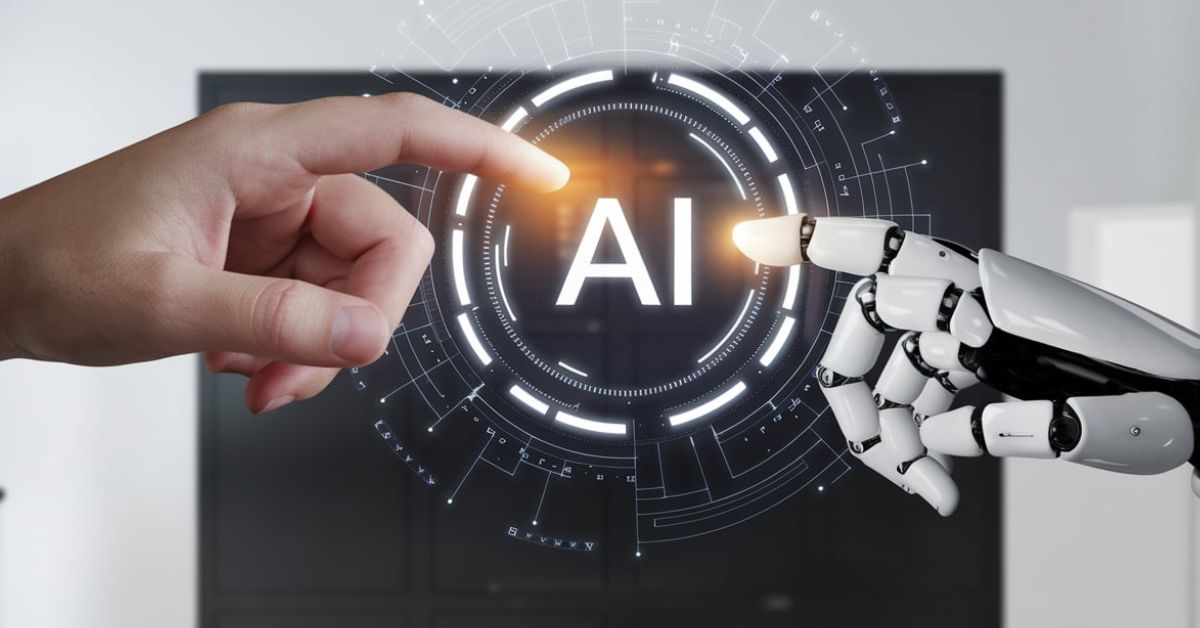Understanding Polanyi’s Paradox & Its Implications for Artificial Intelligence
In the rapidly evolving landscape of technology, the integration of artificial intelligence (AI) into everyday life has sparked profound discussions across various domains. Among the many aspects scrutinized, Polanyi’s Paradox has emerged as a pivotal concept in understanding the limitations and potential of AI. The intersection of Polanyi’s Paradox & Artificial Intelligence raises intriguing questions about the nature of knowledge, learning, and cognitive automation. This blog delves into the essence of Polanyi’s Paradox, examines its relationship with current AI technologies, and explores the challenges and future prospects as AI continues to advance.
What is Polanyi’s Paradox?
Polanyi’s Paradox, named after the influential philosopher and scientist Michael Polanyi, articulates a profound observation in the realm of knowledge and skill. The paradox highlights the implicit, tacit knowledge that humans possess—knowledge that is challenging to articulate and formalize in explicit terms. In Polanyi’s words, “we can know more than we can tell.” This suggests that much of human understanding is rooted in an intuitive sense, making it difficult to codify into formal rules or procedures that machines can easily replicate.
To better understand Polanyi’s Paradox, consider the example of riding a bicycle. Most people can ride a bicycle with ease, yet explaining the precise mechanics and micro-adjustments necessary for balance can be quite challenging. While instructions can be provided, the true understanding of balance and coordination emerges through practice and experience, embedded within an individual’s tacit knowledge.
- Cooking—a chef’s intuition
- Teaching—a teacher’s ability to adapt to students’ needs
- Art—an artist’s creative inspiration
“The tacit component is a crucial part of all knowledge, as it encompasses those elements that cannot be explicitly verbalized but are essential in carrying out a skill successfully.” – Michael Polanyi
Historically, Polanyi’s Paradox underscores the limitations of conventional AI and algorithmic processes in emulating human intuition and expertise. As we overlay these concepts onto modern AI, the challenge becomes evident: how can machines replicate the depth of tacit understanding inherently present in human cognition?
The Relationship Between Polanyi’s Paradox & AI
The relationship between Polanyi’s Paradox & AI is complex and multifaceted. At its core, AI aims to simulate human intelligence, a goal that necessitates the incorporation of both explicit and tacit knowledge. Current AI technologies thrive on well-defined data and explicit instructions but often struggle with tasks that require intuitive judgment or experiential learning.
Several AI applications vividly illustrate Polanyi’s Paradox. For instance, AI in medical diagnosis has shown remarkable proficiency in identifying patterns within vast sets of medical data, often outperforming human experts in specific diagnostic tasks. However, the essence of a seasoned doctor’s intuitive diagnosis and bedside manner remains elusive to AI, revealing a gap rooted in tacit understanding.
Another example can be found in AI-powered creative writing. Systems such as GPT-3 can generate human-like text with impressive coherence and relevance. Yet, these models often miss the nuanced understanding and emotional depth that a human writer brings to their prose, leading to outputs that may feel superficial or detached.
Even in fields like autonomous driving, AI excels in processing sensor data and making decisions based on predefined rules. However, unexpected scenarios requiring experiential insight, such as interpreting human body language or making ethical decisions in split-second situations, challenge the limitations of AI’s explicit programming.

As AI continues to tackle real-world problems, the interplay of Polanyi’s Paradox becomes increasingly apparent. The push towards developing AI that can incorporate tacit, experiential understanding raises profound questions about the future trajectory of technological advancement.
Challenges Posed by Polanyi’s Paradox in AI Development
The development of AI systems is fraught with challenges intricately linked to Polanyi’s Paradox. One of the primary obstacles lies in the nature of tacit knowledge itself—a type of knowledge that is inherently unstructured and difficult to codify. AI systems rely heavily on explicit data and predefined algorithms, yet tacit knowledge does not lend itself to such formalization.
Several challenges surface as AI seeks to bridge this gap:
- Translating Experience into Data: Human experts often rely on years of experience to make decisions, a process that AI cannot easily emulate through mere data collection.
- Handling Ambiguity: Human intuition thrives in ambiguous situations, while AI systems demand clear, unambiguous inputs and definitions.
- Adapting to New Contexts: Tacit knowledge enables adaptability, a trait that AI systems struggle with without continuous updates and retraining.
The quest to synthesize tacit knowledge into AI systems touches on philosophical and ethical dimensions. As developers strive to model the unquantifiable, questions of cognitive boundaries and ethical considerations surface, especially in areas like autonomous weaponry or deepfake technologies.
Overcoming the Challenges
Despite the challenges presented by Polanyi’s Paradox, significant strides are being made in AI research to overcome these hurdles. Central to this endeavor is the integration of advanced machine learning techniques and cognitive models that aim to emulate tacit understanding.
One approach involves the enhancement of AI systems with reinforcement learning, a method that enables machines to learn through trial and error, akin to human experiential learning. By building systems that can adapt and optimize their actions based on feedback, researchers are pushing AI closer to responding intuitively to complex situations.
Incorporating neural networks also offers promise. These networks—structured loosely after the human brain’s neural structure—allow AI to find patterns in unstructured data, potentially unlocking new pathways for understanding tacit knowledge.
Examples of emerging technologies that seek to address these challenges include:
- Generative Adversarial Networks (GANs): Leveraging unsupervised learning, GANs generate more nuanced and realistic outputs, enhancing AI’s creative capabilities.
- Transformer Models: By processing sequences of input data more contextually, these models help in interpreting and generating human-like content.
- Explainable AI: Enhancing transparency and understanding of AI decision-making processes, aiding in bridging tacit knowledge gaps.
The quest to imbue AI with the ability to grasp tacit knowledge remains a frontier of research and exploration. The goals are not only technical but also philosophical—seeking to define the limits of machine cognition and what it truly means for AI to “understand.”
Future of AI in Light of Polanyi’s Paradox
As we look to the future of Artificial Intelligence in the context of Polanyi’s Paradox, the landscape is dotted with both optimistic advancements and considerable ethical concerns. The promise of AI lies in its ability to enhance and augment human capabilities, transforming industries and redefining societal norms.
Future developments may bring about:
- AI-Augmented Decision Making: Combinations of explicit data processing with enhanced tacit understanding, allowing for more nuanced and informed decisions across domains.
- Human-AI Collaboration: Leveraging AI as a collaborative partner, where humans and machines work synergistically to solve complex problems beyond individual capacities.
However, the evolution of AI also presents ethical and societal implications that must be navigated with care. The capacity of AI to mimic and potentially replace human intuition raises questions about job displacement, ethical decision-making, and the essence of human uniqueness.
As we advance, research on AI’s future trajectories becomes crucial. Fostering conversations centered around ethical AI development, inclusive technological policies, and equitable distribution of AI benefits will dictate the path we choose.
Conclusion
In conclusion, understanding Polanyi’s Paradox is pivotal for grasping the intricacies of Artificial Intelligence. The paradox highlights the challenges AI faces in capturing the depth of human cognition and tacit knowledge, which remains a critical component of intelligence. As AI progresses, acknowledging these limitations and actively seeking solutions will pave the way for more holistic and capable systems.
The exploration of Polanyi’s Paradox not only informs technical development but also prompts reflection on the philosophical underpinnings of knowledge itself. As society stands on the precipice of unparalleled technological growth, the thoughtful integration of AI, guided by principles understanding and respect for human complexity, will shape the future of our digital era.
Call to Action
If you found this discussion on Polanyi’s Paradox & Artificial Intelligence insightful, we invite you to share your thoughts in the comments below. Let’s foster a community of dialogue and exploration! For more content like this, subscribe to our blog and stay updated on the latest in AI and technology.







